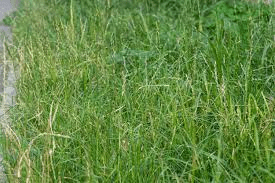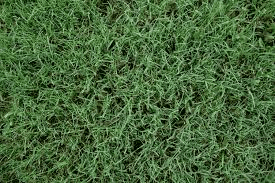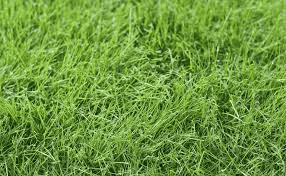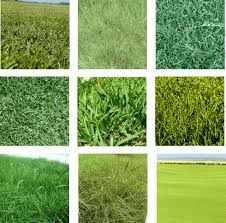Turf grasses are essential for lawns, sports fields, parks, and golf courses. They provide aesthetic beauty, recreational spaces, and environmental benefits. Understanding the types of turf grasses is crucial for maintaining healthy and attractive landscapes.
This article will explore the differences between cool-season and warm-season grasses and provide detailed information about popular varieties like Perennial Ryegrass, Kentucky Bluegrass, and Tall Fescue.
Cool-Season Grasses
Cool-season grasses thrive in the northern regions where temperatures are cooler. They grow best in spring and fall when the weather is mild. Here are some key characteristics:
1. Growth Cycle: Cool-season grasses grow actively when temperatures are between 60°F and 75°F (15°C to 24°C). They can withstand light frost and recover quickly in cooler months.
2. Drought Tolerance: These grasses tend to have shallow root systems, making them less drought-tolerant than warm-season grasses. However, they can still thrive with adequate moisture.
3. Maintenance Needs: Cool-season grasses often require regular mowing, watering, and fertilization to stay healthy and vibrant.
4. Color and Texture: They generally have a fine to medium texture and a rich green color, adding beauty to lawns and landscapes.
5. Popular Varieties: Common cool-season grasses include Perennial Ryegrass, Kentucky Bluegrass, and Tall Fescue.
Warm-Season Grasses
Warm-season grasses flourish in southern regions where temperatures are warmer. They grow best in late spring and summer when temperatures are higher. Here are their key characteristics:
1. Growth Cycle: Warm-season grasses grow actively when temperatures range from 80°F to 95°F (27°C to 35°C). They are more heat-tolerant and thrive in sunny conditions.
2. Drought Resistance: These grasses typically have deeper root systems, allowing them to access moisture from the soil more effectively. This makes them more drought-resistant than cool-season grasses.
3. Maintenance Needs: Warm-season grasses require less frequent watering and fertilization during the cooler months. However, they may need regular mowing during the growing season.
4. Color and Texture: They usually have a coarse texture and can exhibit shades of green, yellow, or brown depending on the species and growing conditions.
5. Popular Varieties: Common warm-season grasses include Bermuda grass, Zoysia grass, and St. Augustine grass.
Perennial Ryegrass

Perennial Ryegrass is a popular cool-season grass known for its quick establishment and vibrant appearance. Here are its key features:
1. Quick Germination: Perennial Ryegrass germinates quickly, usually within 5 to 10 days, making it ideal for quick patches and overseeding.
2. Fine Texture: It has a fine, dense texture that creates a lush, green lawn. This grass is often used for residential lawns and sports fields.
3. Cool-Season Adaptability: It thrives in cooler temperatures, making it suitable for northern climates and areas with mild summers.
4. Wear Tolerance: Perennial Ryegrass has good wear tolerance, making it an excellent choice for high-traffic areas like playgrounds and sports fields.
5. Maintenance Requirements: Regular watering, fertilization, and mowing are essential for maintaining a healthy Perennial Ryegrass lawn. Aim for a mowing height of 2.5 to 3 inches.
Kentucky Bluegrass
Kentucky Bluegrass is another popular cool-season grass known for its rich color and dense growth. Here’s what you need to know:
1. Spreading Growth Habit: Kentucky Bluegrass spreads through underground rhizomes, allowing it to fill in bare spots naturally.
2. Dark Green Color: This grass is famous for its deep green color, which enhances the beauty of lawns and landscapes.
3. Cold Tolerance: Kentucky Bluegrass is highly tolerant of cold temperatures and can withstand harsh winters, making it ideal for northern regions.
4. Drought Sensitivity: While it has a beautiful appearance, Kentucky Bluegrass can be sensitive to drought conditions. Regular watering is crucial during dry spells.
5. Maintenance Practices: To maintain a healthy Kentucky Bluegrass lawn, mow at a height of 2 to 3 inches, and provide adequate irrigation during dry periods. Fertilization in early spring and fall promotes strong growth.
Tall Fescue
Tall Fescue is a versatile cool-season grass known for its adaptability to various conditions. Here’s an overview of its characteristics:
1. Deep Root System: Tall Fescue has a deep and extensive root system, making it highly drought-resistant and capable of surviving in heat.
2. Coarse Texture: It features a coarser texture compared to other cool-season grasses, providing a unique lawn appearance.
3. Adaptability: This grass is adaptable to different climates and soil types, making it suitable for transitional zones and areas with varying weather conditions.
4. Shade Tolerance: Tall Fescue has moderate shade tolerance, allowing it to grow well in partially shaded areas.
5. Maintenance Tips: Regular watering and mowing at a height of 3 to 4 inches help maintain a healthy Tall Fescue lawn. Fertilization in early spring and fall enhances its growth and resilience.
Read Also: How to Control Feeding Struggle among Fishes in the same Pond
Bermudagrass

Bermudagrass is a warm-season grass known for its durability and adaptability. Here are its key features:
1. Growth and Adaptability: Bermudagrass thrives in warm climates and grows vigorously in temperatures between 80°F and 95°F (27°C to 35°C). It is often used in southern regions.
2. High Traffic Tolerance: This grass is highly tolerant of foot traffic, making it an excellent choice for lawns, sports fields, and golf courses.
3. Fast Establishment: Bermudagrass establishes quickly from seeds or sod, allowing for rapid coverage of bare areas.
4. Drought Resistance: With a deep root system, Bermudagrass can withstand periods of drought better than many other grasses.
5. Maintenance Requirements: Regular mowing at a height of 1 to 2 inches, along with adequate watering and fertilization, helps maintain a healthy Bermudagrass lawn.
Zoysiagrass
Zoysiagrass is another warm-season grass that is highly valued for its lush appearance and adaptability. Here’s what you need to know:
1. Growth Characteristics: Zoysiagrass grows best in warm temperatures and has a slower establishment rate compared to Bermudagrass, taking longer to fill in.
2. Dense Growth: This grass forms a thick carpet-like lawn that can resist weeds and tolerate moderate foot traffic.
3. Drought Tolerance: Zoysiagrass has good drought resistance due to its extensive root system, making it suitable for dry areas.
4. Shade Tolerance: Unlike many warm-season grasses, Zoysiagrass can tolerate some shade, making it ideal for lawns with partially shaded areas.
5. Maintenance Practices: Mow Zoysiagrass to a height of 1.5 to 2.5 inches. It requires regular watering during dry spells and occasional fertilization in spring and summer for optimal growth.
Buffalograss
Buffalograss is a native warm-season grass that is well adapted to the Great Plains and other arid regions. Here are its main characteristics:
1. Drought Resistance: Buffalograss is extremely drought-tolerant, making it ideal for regions with low rainfall and water restrictions.
2. Low Maintenance Needs: This grass requires minimal fertilization and mowing, making it a low-maintenance option for homeowners.
3. Soft Texture: Buffalograss has a fine texture and rich green color, providing an attractive lawn without excessive upkeep.
4. Growth Cycle: It grows best in warmer temperatures, thriving in the same temperature range as other warm-season grasses.
5. Maintenance Guidelines: Mow Buffalograss to a height of 2 to 3 inches, and water sparingly. Fertilization should be limited to once a year in the spring.
Read Also: Complete Guide on Treatment of Livestock Diseases
Fine Fescue

Fine Fescue refers to a group of cool-season grasses, including Creeping Red Fescue, Chewings Fescue, and Hard Fescue. These grasses are known for their fine texture and shade tolerance. Here are the key features:
1. Shade Tolerance: Fine Fescue is particularly well-suited for shaded areas, making it an excellent choice for lawns with trees or buildings that block sunlight.
2. Fine Texture: This grass has a delicate and soft appearance, creating a lush lawn that is visually appealing.
3. Slow Establishment: Fine Fescue may take longer to establish compared to other grasses, but once established, it is quite resilient.
4. Low Maintenance: These grasses generally require less water and fertilizer than other types, making them low-maintenance options.
5. Maintenance Tips: Mow Fine Fescue to a height of 2 to 4 inches. Water during dry periods, and fertilize in early spring or fall to promote healthy growth.
Choosing the Right Turf Grass
Selecting the right turf grass is crucial for creating a healthy lawn. Here’s how to choose:
1. Climate Consideration: Determine if you are in a cool-season or warm-season region. Cool-season grasses thrive in northern climates, while warm-season grasses are better suited for southern areas.
2. Sunlight Availability: Assess the amount of sunlight your lawn receives. If your lawn is mostly shaded, opt for shade-tolerant varieties like Fine Fescue. For sunny areas, consider Bermudagrass or Zoysiagrass.
3. Foot Traffic Levels: Consider how much foot traffic your lawn will experience. High-traffic areas require durable grasses like Bermudagrass or Zoysiagrass, while low-traffic areas can use fine-textured grasses.
4. Maintenance Preferences: Evaluate how much time you can dedicate to lawn care. If you prefer a low-maintenance option, choose Buffalograss or Fine Fescue.
5. Soil Type: Test your soil type to understand its pH and nutrient levels. Some grasses may perform better in certain soil conditions.
Maintenance and Care for Turf Grasses
Proper maintenance is essential for a healthy lawn. Here are key care practices for turf grasses:
1. Mowing: Regularly mow your lawn to maintain an appropriate height for your grass type. Mowing too short can stress the grass and lead to weed invasion.
2. Watering: Provide adequate water, especially during dry spells. Most grasses require about 1 to 1.5 inches of water per week. Water deeply and less frequently to encourage deep root growth.
3. Fertilization: Fertilize your lawn according to the needs of your grass type. Cool-season grasses typically need fertilization in spring and fall, while warm-season grasses benefit from fertilization in late spring and summer.
4. Aeration: Aerate your lawn once a year to relieve soil compaction and improve water and nutrient absorption. This process involves removing small soil plugs from the lawn.
5. Weed Control: Monitor your lawn for weeds and take action promptly. Hand-pulling, mulching, and using herbicides can help manage weed populations effectively.
Understanding turf grasses is essential for anyone looking to establish or maintain a healthy lawn. Cool-season grasses like Perennial Ryegrass, Kentucky Bluegrass, and Tall Fescue each have unique characteristics that make them suitable for different conditions.
By choosing the right type of grass for your climate and maintenance preferences, you can create a vibrant, resilient lawn that enhances the beauty of your landscape. Remember to consider factors like growth habits, maintenance needs, and climate suitability when selecting your turf grasses. With proper care, your lawn will thrive, providing enjoyment for years to come.
Do you have any questions, suggestions, or contributions? If so, please feel free to use the comment box below to share your thoughts. We also encourage you to kindly share this information with others who might benefit from it. Since we can’t reach everyone at once, we truly appreciate your help in spreading the word. Thank you so much for your support and for sharing!
Read Also: Underground Water and Aquifers
Frequently Asked Questions
We will update this section soon.

